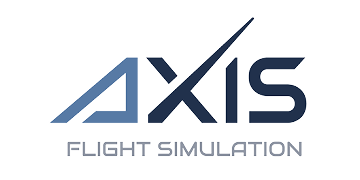
AXIS qualifies AXIS IRIS avionics rehost and upgrades visual system
27. Juni 2024
Qualifying flight simulators
2. August 2024
AXIS qualifies AXIS IRIS avionics rehost and upgrades visual system
27. Juni 2024
Qualifying flight simulators
2. August 20244. July 2024
Simulator Maintenance Tips and Best Practices
By Gabor Rabovszky, Team Leader, Support & After Sales
Supporting and optimising flight simulators for longevity and peak performance requires a well-structured and consistent simulator maintenance routine. By following a comprehensive schedule and adhering to best practices, simulator operators can ensure their equipment remains in top condition, providing realistic and reliable training experiences.
Scheduled checks
Simulator maintenance is managed by the operator, who employs technicians trained by the manufacturer.
A flight simulator's maintenance schedule is divided into daily, weekly, monthly, quarterly and yearly tasks, each including specific checks and inspections. This structured approach ensures that all components are regularly looked over and serviced, preventing issues before they become critical.
To ensure the simulator runs smoothly on a day-to-day basis, engineers stop various processes and shut down projectors at the end of each day. The following morning, before simulator sessions begin, they restart these processes and perform a small subjective fly-out, such as a traffic pattern or arrival procedure, to ensure everything is operational.
Troubleshooting tips
Flight simulators consist of numerous interconnected devices, hardware components and computers running various operating systems. Some of these are custom built, whereas others are original aircraft pieces. This complexity necessitates constant fine-tuning, especially when updates are made to a subunit.
Here are some of our top troubleshooting tips to ensure the continued and synchronised running of multiple systems at once:
- Regularly update software: ensure all software is up-to-date, and thoroughly test new versions on non-critical systems before fully integrating with the simulator.
- Monitor system health: use the Technical Monitoring and Control System (TMCS) to track the status of all subsystems and receive real-time updates.
- Inspect connections: regularly check all cables and connectors for signs of wear or damage.
- Conduct routine tests: perform regular operational tests to catch issues before they affect training sessions.
Critical components
While all simulator components are necessary to carry out training, IT parts are particularly crucial. A flight simulator relies on a vast network of computers and logic boards, all interconnected and communicating in a moving environment. Loss of connection or hardware defects can result in significant issues, potentially grounding the simulator.
Key components to monitor to ensure optimised running times include:
- Hosts and servers: regularly check and examine to sustain the health of all host computers.
- Visual systems: ensure projectors and screens are clean and functioning correctly.
- Motion and control loading systems: keep these systems well-lubricated and free of mechanical issues.
- Software systems: continuously monitor and update software to prevent and resolve bugs.
Tracking these systems is made simple by the TMCS. AXIS’ unique TMCS is a vital tool for maintenance technicians, providing real-time status updates on all simulator components, available 24/7/365.
It allows for straightforward evaluation from within the simulator, or remotely via the online TMCS page. The TMCS uses predictive analytics to share warnings about potential risks, enabling pre-emptive action.
Best practices for simulator maintenance
Adhering to a preventive maintenance schedule is best practice for ensuring the longevity and performance of a flight simulator. Technicians should be thoroughly familiar with the latest upkeep and servicing manuals and follow all procedures meticulously. Operators can also utilise the support system provided by AXIS for additional help. With a support contract, you ensure that your simulator is well-cared for by support and aftersales engineers, who can assist with everything from technical problems to AOG.
Cleaning is also integral to enhancing any simulator’s efficiency. Standardised cleaning routines are included in maintenance manuals and require technical knowledge and precautions, to prevent dust and debris from affecting sensitive components.
Lifespan optimisation
The average lifespan of a full flight simulator is determined by the actual aircraft’s usability. Continuous upgrades to components, such as motion systems or visual systems, ensure that the simulator remains up-to-date with the highest technical standards, and the real-life aircraft’s technology. When properly cared for and regularly refurbished, a simulator’s lifespan can easily exceed two decades.
By following these maintenance tips and best practices, operators can ensure that their flight simulators remain reliable, realistic and ready for any training scenario.


